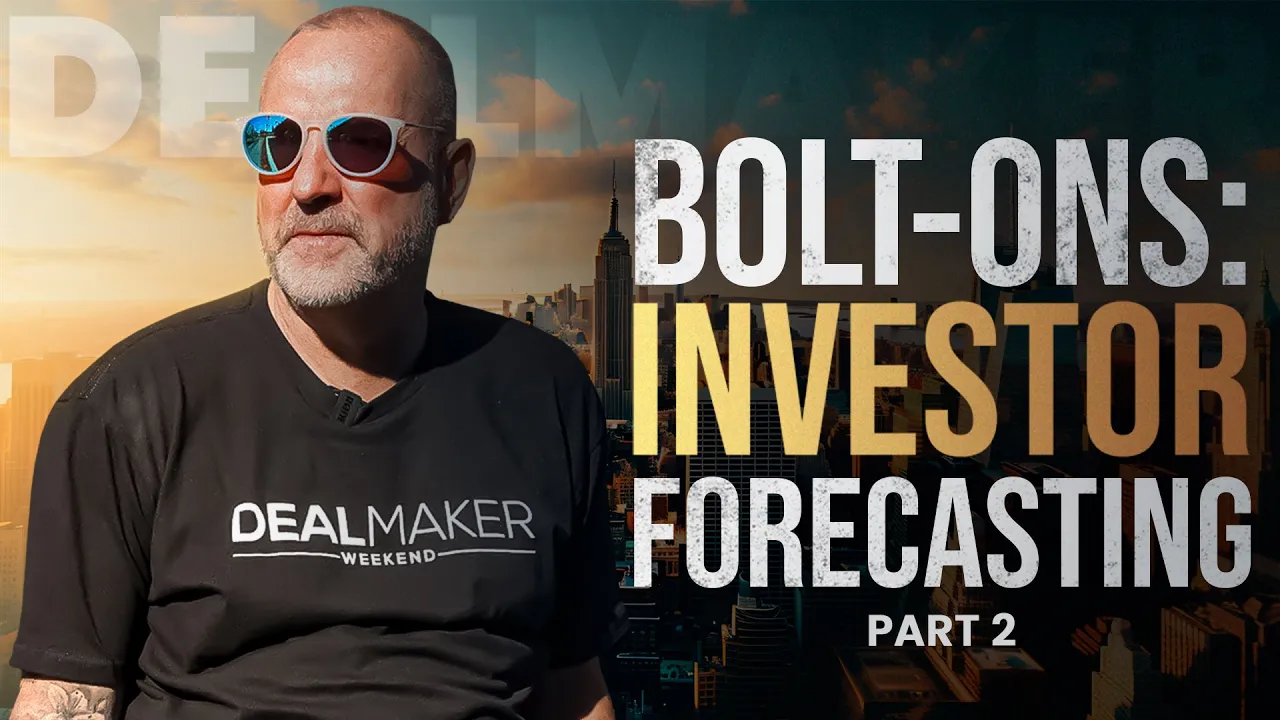How to Use Sub2 in Business Acquisitions
How to Use Sub2 in Business Acquisitions
In this quick video, Carl Allen explains how real estate investors are increasingly turning to business acquisitions as a hedge against real estate market volatility. Drawing from his close connections to the SubTo community, he dives into the concept of “subject-to” deals—where the buyer takes control of a property or business without taking over the seller’s loan—and how the same strategy applies when acquiring businesses.
He breaks down how business sub-to deals work by assuming existing liabilities like SBA loans, EIDL loans, or accounts payable, while only negotiating for the equity portion. This creative financing approach allows buyers to take control of cash-flowing businesses with minimal upfront capital. If you’ve ever wondered how sub-to strategies translate from real estate to business acquisitions, this breakdown makes it clear and actionable.
Full Transcript:
Hey, guys. Carl Leland. Got a really quick video for you. Just pulling out of the parking lot here over in beautiful Space Coast, Florida.
Just wanna make sure I don’t get hit, but, I wanna talk to you about something really, really cool. So as you know, a lot of real estate investors get into business acquisitions. And one of the reasons they do that is number one, buying businesses is a great hedge against the volatility often that we see in the real estate markets. Like right now we’re in the biggest buying market for business deals at the last hundred years, yet the real estate market is, is a little bit tricky.
So a lot of investors in real estate are buying businesses to kind of hedge against what’s going on in real estate. And as you know, Paige Morby, very, very good friend of mine.
So I’m actually connected very closely into the sub two community, and a lot of sub two students have come into my Dealmaker Protege program to learn how to buy business deals. And one of the questions I get asked a lot is can you sub two a business acquisition? And you can. But for those of you who don’t know what a sub two is, let me let me explain it.
So sub two in real estate is where you’re buying a house and you’re you’re not assuming the mortgage or the loan that’s on the house. The loan is staying in the name of the owner, and then you’re just negotiating a deal to buy the equity. So let’s say it’s a five hundred thousand dollar house and the owner has a four hundred thousand dollars mortgage and there’s a hundred thousand dollars of equity. So the loan stays in the seller’s name, in the owner’s name, and you’re just making the payments.
And then the hundred thousand dollars of equity that you’re buying, you might pay fifty thousand dollars down and then pay fifty thousand dollars in seller financing over five, ten, however many years. So that’s a typical kind of sub two hybrid deal in real estate. But that’s exactly how business acquisitions work. Now when you buy a business, if the business has got debt already on the balance sheet and you’re assuming that, then obviously we’re not paying for that.
We’re reducing the purchase price by that amount. So let’s say you’re buying a business that’s five hundred thousand dollars valuation.
Let’s say it’s got two hundred and fifty thousand dollars a year in cash flow and you’re paying a two times multiple to buy that business. That’s half a million dollars. Yet that business has four hundred thousand dollars of debt already inside of it, then you’re only paying a hundred thousand dollars to buy the stock or the equity in the business if you’re assuming the loan. Now the loan isn’t owned by the seller.
It’s owned by the business. It could be an LLC. It could be an s corp. Or if you’re in the UK, it could be an LTD, a limited company.
Or if you’re in Australia, it could be a PTY or something like that. So the loan stays owned by the business. You’re just continuing to pay the loan through the cash flows that the business generates. So you’re only buying the equity, only paying the equity that’s in the business, which in this case would be one hundred thousand dollars.
So that’s an example of of a sub two deal or a sub two hybrid deal. So in some instances, you might decide to buy the business and only inherit the liabilities. Let’s say the owner is really distressed. They’re really frustrated.
The business is cash flowing. It’s got a lot of liabilities inside of it, but the owner just wants to retire or just wants to to kind of exit. They might not need a closing payment or any payment for the equity at all. They just want you to assume the liabilities that are in the business, which could be accounts payable.
It could be a bank loan. It could be an EIDL loan from the government in COVID, it could be an SBA loan from when they originally acquired the business, it could be tax loans due, it could be, notes to other people, it doesn’t matter. So when you’re buying a company, it’s always smart to negotiate a deal where you can assume all of those liabilities.
And then you’re only paying for the equity of the business and then you can get really, really creative around those different things. So that’s sub two. We talked about what sub two is in a real estate deal and sub two in a business deal is exactly the same thing. You’re basically inheriting the debt that the business has.
The business already owns that debt. The business will continue to discharge that debt, make those payments. And because you’re now the new owner of the business, then you can control that outcome. So you’re only negotiating on what the equity component of the deal is.
So I hope you found that useful. Don’t forget to hit like and subscribe so you can get access to all of my other videos in real time, and I will see you very, very soon. And if there’s any question that you have, anything that you want my help on, my advice on, then definitely comment in the chat section beneath this video. My team will be looking at those.
We’ll serve them up to me, and I’ll get those videos back to you as soon as possible. So have a great rest of your day, and I will see you soon. Until then, bye for now.




